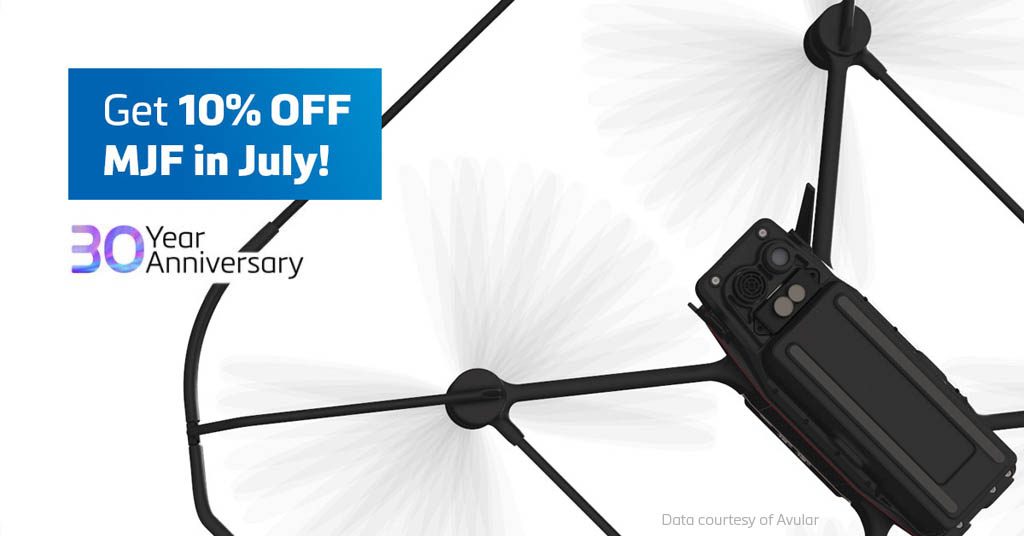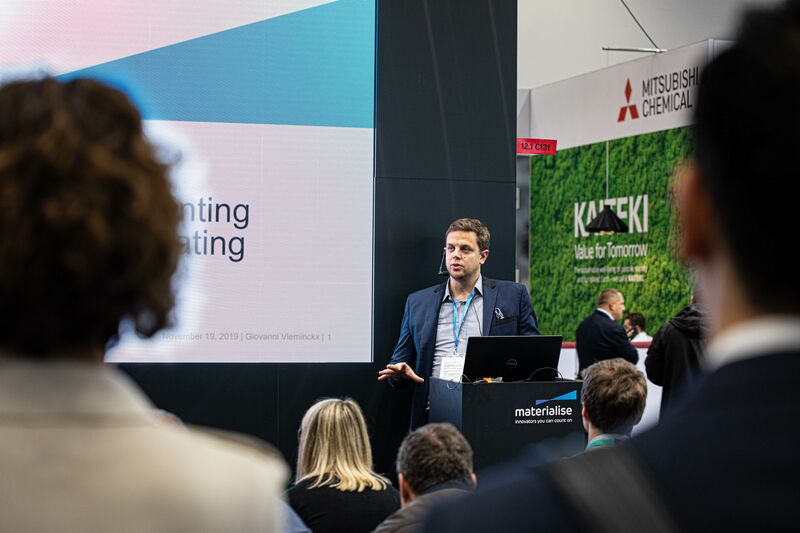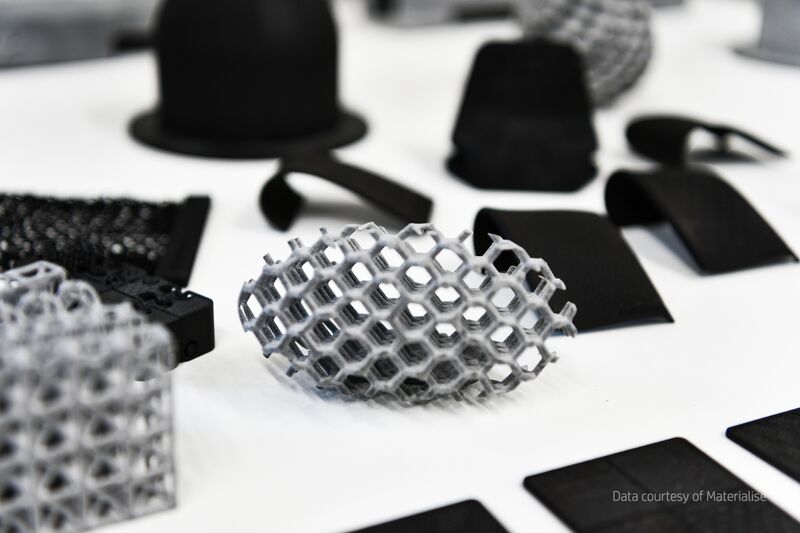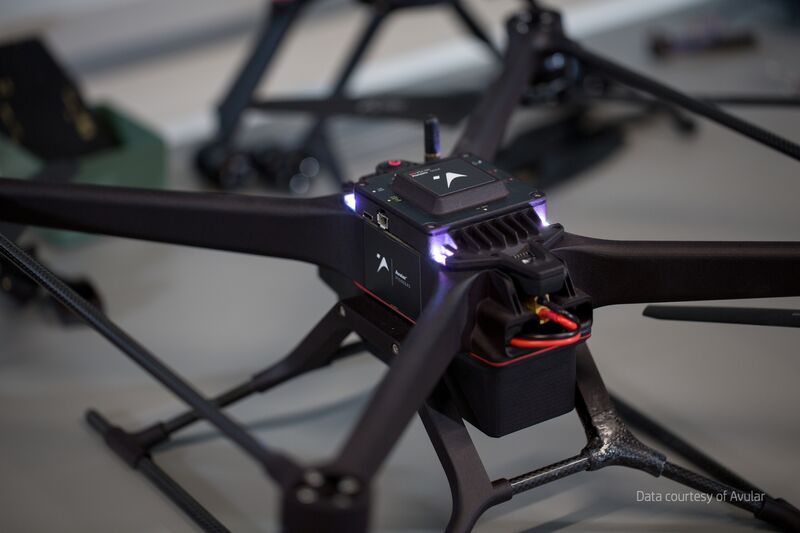
30 Years of Innovation: Industry Collaboration Made Multi Jet Fusion a Reality
When Multi Jet Fusion first came on the scene a few years ago in 2016, it made a big splash. The 3D printing world was excited to become acquainted with the much-anticipated technology, also called MJF for short. Soon, many realized the potential for their prototypes and end-use parts thanks to its higher surface quality, consistent build time regardless of the number of parts, and the ability to print exceptionally thin walls.
As i.materialise’s parent company, Materialise, celebrated its 30th anniversary on June 28th of this year, we are reflecting back on the meaningful innovations along the way that have made the company what it is today. This is the first blog in our series, which will look at a different technology every month for the rest of this year. Stay tuned to our blog to discover the rest of the series!
Innovation is in our DNA
“It has been in Materialise DNA over the past 30 years to continue to innovate, including being on the lookout for the newest technologies and materials,” according to Giovanni Vleminckx, Research Engineer. “MJF is a great example of this. To me, this is the core of what innovation is all about: developing, testing, and collaborating with others in the industry on technology to push 3D printing to the next level.”

Research Engineer Giovanni Vleminckx began testing Multi Jet Fusion in 2016 due to a strategic partnership with HP.
MJF came to Materialise in 2016 when HP was closer to debuting their first printer. The partnership started with Materialise developing build processor software for the machines to establish a seamless connection from computer to printer. The result was a simplified workflow for the user, as well as the possibility of creating build jobs, all in a single software package.
To make the build processor as fine-tuned to the machine as possible and uncover the potential benefits the technology could have for our manufacturing customers, Giovanni along with his team started exploring the possibilities and testing the MJF printers themselves. The partnership extended to also provide feedback to HP on the hardware so the machine could be fine-tuned before launching. This also allowed Materialise to be one of the first to offer the technology and fully adopt it into the biggest factory for 3D printing in Europe.
From there, the partnership between Materialise and HP became even closer when in 2019 Materialise joined HP’s newly launched Digital Manufacturing Network. 3D printing suppliers in this network must pass specific production process criteria to give customers reassurance that their MJF parts are of the highest standard.
An innovative approach to powder-based 3D printing
“Those first few times working with MJF were very exciting. I could immediately see how to bring out the strengths of this technology. What makes MJF so special is that the build is always finished in a certain amount of time — no matter how many parts are included. This means that we could play on this strength and put many parts nested tightly together in one batch, and it would be much faster to print,” according to Giovanni.
Before MJF, laser sintering was the only powder-based technology, which, as its name suggests, uses lasers to melt the layers of powder together. MJF is another technology that fuses powder together, but instead uses a mixture of heating the powder bed and depositing a fusing agent onto select particles.
MJF’s main benefits are highlighted in a video from its launch in 2017.
The benefits were visible immediately for the first launch with Polyamide (MJF): “It’s perfect for projects that need surface texturing or high detail. Think in terms of functional parts, parts that need printed labeling, engraving, embossing, or just thinner walls than you’d get with other versions of Polyamide,” says Giovanni.
Materialise soon began to research using other materials on the MJF printer. Through Materialise’s partnership with BASF, Materialise began looking into printing the flexible Rubber-like material. Giovanni and his team found that it gives crisp details, smooth surfaces, and high accuracy. “To put it simply, it’s just easy, clean, and behaves well,” says Giovanni. It was ready to be launched in September 2019 – making Materialise the first in the 3D printing industry to offer Rubber-like, also known as Ultrasint TPU.

MJF technology makes different surface textures and lightweight structures possible because it is made using thin layers.
“In general, we’ve seen good mechanical properties with MJF. This is due to the nature of how MJF works as a printing technology in combination with the fact that they use fairly thin layers which makes parts very strong.”
Because powder-based technologies do not rely on support structures, users turn to it when they need the ultimate freedom of design.
For these reasons, MJF works well for functional prototypes, lightweight end-use parts, hinges, interlocking parts, integrated channels, production tools, and spare parts across industries.
Custom drone manufacturer Avular has seen these benefits first-hand for prototypes and end-use manufacturing. They turn to 3D printing due to its freedom of design, fast turnaround, and high-quality materials to be able to design and build mobile robots unique for each customer. Materialise has been a trusted partner since 2014, and when we joined HP’s Direct Manufacturing Network, it gave Avular even more confidence that the MJF parts they order would be of the highest quality available.

Avular is reassured that the MJF parts they order will be of a high-quality because Materialise is part of HP’s Digital Manufacturing Network.
A solid foundation for innovation
“Materialise has made the choice to be an innovator, and it shows itself in every aspect of what we do. Our slogan is ‘innovators you can count on’ because from the very beginning Materialise has had a need to invent. A need to get in the market and see where the gaps are and figure out a way how to fill them. And most importantly, a need to discuss with all parties,” says Giovanni.
“We’re working to innovate in the 3D printing industry for the benefit of our customers, for the benefit of the market, and for the entire ecosystem. This is the reason why we will continue to onboard and validate. MJF is just one example in our 30-year history, and I am sure there will be many more in the years to come.”
Celebrate our 30th anniversary with us with an additional 10% off all MJF i.materialise orders in July! Simply use the following code at checkout: 30Y_MJF
Discover why we love the technology by ordering today!
Recommended Articles
No related posts.


